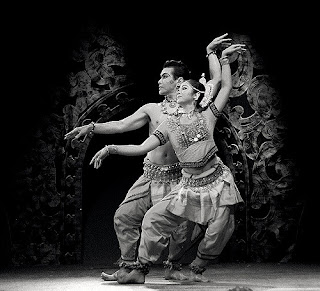Wheel of Life

This wheel Consists of four circles. The story says that at the time of Gautama Buddha, King Bhimbisaar was presented with a jewel enthroned armor by the King of Udayana. The armor was very beautiful and very expensive. King Bhimbisaar was worried how to repay King Udayana's gift. What could be even more expensive than this? He was a disciple of Buddha, so he asked Lord Buddha what should he do. Lord Buddha instructed him to make this painting and present it to king Udayana. King Udayana studied this picture, meditated on this picture and attained Nirvana. The picture depicts Lord of Death (Yama/Mara) holding four concentric wheels in his mouth. These wheels tell about the fact that we, as we are today are in the grasp of Mara, and continue to take birth, die and take rebirth. In the process we are controlled by our Karmas and our emotions, the two move us like threads of a puppet. Bounded by this thread we bear the fruit of our Karmas, some times good, sometimes bad. The wheel a...


